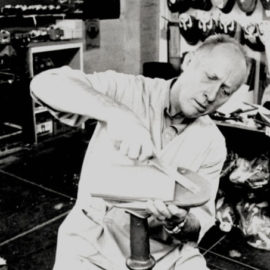

This article is an excerpt from the Shortform book guide to "Discover Your True North" by Bill George. Shortform has the world's best summaries and analyses of books you should be reading.
Like this article? Sign up for a free trial here.
What’s the best way to support your team in the workplace? What are the benefits of a team-oriented style of leadership?
Staying involved with your team and giving them autonomy earns you respect and better results. Discover Your True North by Bill George further says that this type of leadership builds strong relationships with employees that will make feedback easier for them to accept.
Learn how to support your team members so they know you’re rooting for them.
Support Your Team Members
Learning how to support your team in the workplace means enabling your team members to do their best work rather than trying to micromanage or force others to do what you want. He argues that this is important because younger generations expect their leaders to give them respect and autonomy over their work. Therefore, adopting this style of leadership will help you attract employees to your organization and advance your core purpose.
To implement this team-oriented style of leadership (what George calls the “I to We” shift), you must build strong relationships with your employees and use feedback and introspection to increase your self-awareness. George says that to strengthen your relationships with team members, you have to be vulnerable and show mutual respect. This gives you more credibility as a leader and establishes the supportive and non-hierarchical dynamic that millennial employees prefer. For example, if you’re providing constructive feedback to a team member about their work habits, you might tell them that you also struggled with some of those same behaviors in the past and let them know that you’ll provide any additional support they might need to improve.
| Leadership Preferences Across Generations George emphasizes the need to shift toward a more team-oriented leadership style to adapt to the needs of millennial employees, implying that they’re the majority or highest-priority cohort in the workforce. Although a 2018 study says that millennials make up the largest proportion of the workforce, another study points out that the workforce generally includes three different generations at a given time, suggesting that a more nuanced approach may be needed. Some research supports George’s implication that different generations have distinct workplace preferences. For example, some experts assert that younger generations want their company to have a meaningful mission and prefer service-oriented and empathetic leaders (similar to George’s description of the core purpose and supportive leadership). On the other hand, others argue that employees’ biggest priorities are consistent across generations: They want to work for an organization that cares about their well-being and has ethical leadership—priorities that also align with George’s advice to stay true to your ethics and build strong relationships with team members. Another expert asserts that the key to managing up to five different generations in the workplace is to ignore stereotypes about the personality and values of employees based on their age. They argue that while different upbringings impact people’s preferences in the workplace, managers shouldn’t make assumptions about their employees (which may be false) because this can undermine mutual respect and therefore decrease employees’ performance. |
In addition to relationship-building, soliciting feedback is an important way to ensure that you’re supporting your team to the best of your ability. George advises you to process feedback objectively and follow it up with introspection about your behavior and how you can genuinely improve your strategies moving forward. He asserts that feedback is necessary to adapt your leadership style to your colleagues and the circumstances. For example, a person who’s newer in your industry may want more guidance, whereas a veteran employee might prefer to work more independently. Therefore, you may need to have one-on-one conversations to get feedback and understand these individual needs.
| Soliciting and Implementing Feedback In The Oz Principle, Roger Connors, Tom Smith, and Craig Hickman say that to get useful feedback from your coworkers or other people in your life, you must first ensure that the other person feels safe being honest with you. To do this, let them know that you’re looking for the truth—not just praise, explain why you need the feedback, and be specific in your phrasing. For example, instead of asking for general feedback, you might ask the other person if they’ve ever felt like your communication was unclear. Other experts emphasize the key steps after you get feedback. In Thanks for the Feedback, Douglas Stone and Sheila Heen recommend starting with small experimental changes to implement the feedback, and they offer tips to increase your motivation to continue to improve. For example, you might find a way to turn your effort into a game by giving yourself a reward when you successfully incorporate the feedback into your behavior. |

———End of Preview———
Like what you just read? Read the rest of the world's best book summary and analysis of Bill George's "Discover Your True North" at Shortform.
Here's what you'll find in our full Discover Your True North summary:
- Why being true to yourself is more important than having talent or charm
- Guidelines anyone can follow to become a leader in their organization
- How to identify your purpose and ethics based on your unique experiences






